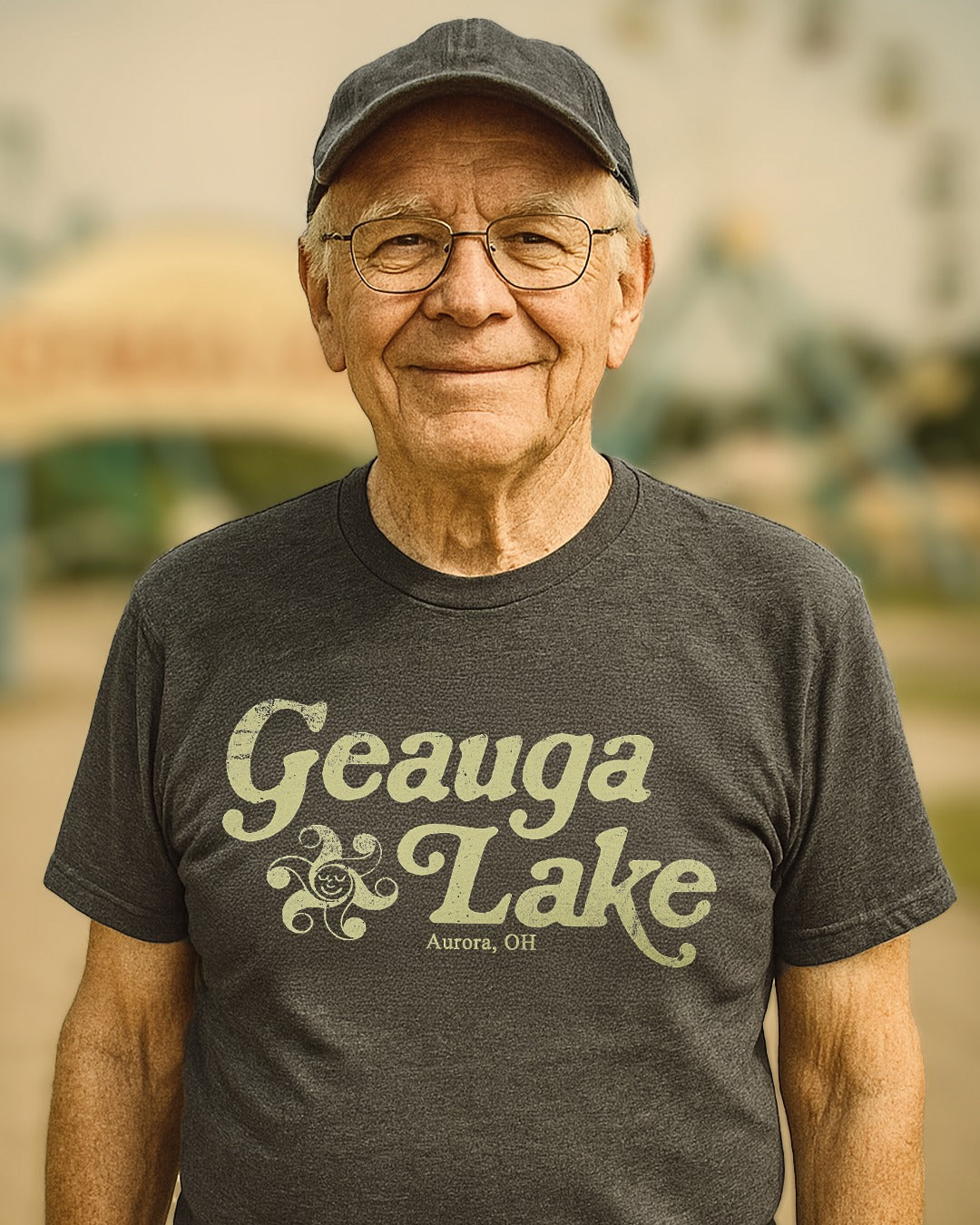For 135 years, the area around Geauga Lake, 20 miles southeast of Cleveland, was the destination of choice for people in Northeast Ohio, and sometimes beyond, looking for a place to relax and have fun. For most of that 135 years, that meant a trip to the amusement park that shared its name with the lake.
Originally called Picnic Lake it later became known as Giles Pond in honor of Sullivan Giles who came to own much of the property around the deep, natural lake after building a cabin there in 1817. In 1872, he noticed a rail line ran along his property and decided to open an amusement park hoping to draw travelers as well as residents from the greater Cleveland area.
He renamed the park Geauga Lake in 1887.
In 1925, William J. Kuhlman, who then owned the park, added a brand new ride called the Big Dipper. It was designed by the famous coaster designer John Allen, it was the country’s biggest roller coaster at that time. An Olympic-size swimming pool and race track were also added around the same time. More rides and attractions followed, including a steam-powered carousel in 1937.
The park weathered some rough times. A tornado hit it in 1942. Ten years later, a fire damaged several buildings including the bowling alley, dance hall, and roller rink.
In 1965, former Cedar Point executives formed Funtime Incorporated and purchased Geauga Lake four years later. It was a tricky time in the amusement park business as many smaller parks closed their gates. As the purchase of Geauga Lake was being completed, beloved Euclid Beach Park in Cleveland ceased operations after years of financial struggles.
Funtime Incorporated, however, had big plans that not only included adding rides and attractions but bringing in a neighbor to complement Geauga Lake. In 1970, SeaWorld, at the behest of Funtime, opened up across the lake. Since there was very little overlap between the two parks in terms of attractions, both worked to promote the area as a vacation destination. And it worked.
Among the big rides added during the ‘70s to Geauga Lake were two new-fangled looping coasters, Double Loop in 1977, followed by Corkscrew in 1978. While Geauga Lake thrived, other smaller regional parks struggled. Chippewa Lake, south of Medina, closed after the 1979 season, while Idora Park in Youngstown was forced out of business after a catastrophic fire destroyed its top ride, the Wildcat roller coaster.
As Geauga Lake added a water park in 1983, SeaWorld too benefited as visitors poured in year after year. In 1988, Geauga Lake celebrated its centennial season with the addition of Raging Wolf Bobs designed by the Dinn Corporation. Founder Charles Dinn and been on the design team for The Beast, Kings Islands signature coaster, and his newest creation brought in even more visitors.
The 1990s were an interesting time for the amusement park industry, as several movie and TV companies got into the business in attempting to duplicate Disney’s success. Paramount Pictures bought a string of parks including Kings Island and its sibling parks. Time Warner, owners of Warner Brothers, acquired Six Flags. The idea was to promote movies, TV, and other inrellcru properties via the newly acquired amusement parks. It didn’t quite work like they had hoped.
Premier Parks had purchased Geauga Lake in 1995. In 1998, they bought Six Flags from Time Warner. They dropped the Premier name and changed the name of the company to Six Flags. Geauga Lake was rebranded Six Flags Ohio and received a $40 million makeover.
In the meantime, SeaWorld was starting to add thrill rides to its other parks in Florida, California, and Texas. SeaWorld, then owned by Annheuser-Busch, approached Six Flags about buying Geauga Lake (Six Flags Ohio). Since SeaWold sat in a different jurisdiction from most of Geauga Lake, zoning laws prohibited the marine park from building anything over a certain height. Acquiring the old Geauga Lake would have solved this.
Six Flags, though, made a counter offer to buy SeaWorld Ohio. Not having to add rides and seasonally moving marine life, including a massive killer whale, and receiving top dollar for the property, Busch couldn’t turn down the deal. The parks were merged and became Six Flags World of Adventure. Sitting on 700 acres it was the world's largest amusement park.
The fun didn’t last. Six Flags had over extended itself a problem exacerbated by under performing smaller parks and huge investments in bigger parks that didn’t make back the money they had put in.
In 2004, Six Flags sold World of Adventure to Cedair Fair, owners of Cedar Point. The park changed its name back to Geauga Lake while the former SeaWorld area was closed. Cedar Fair later used that land for an enlarged water park.
Attendance declined from a peak of almost 3 million in 2001 to just 700,000. Rumors began to swirl that Cedar Fair planned to close the park. Those rumors were confirmed on September 21, 2007 when, a week after closing for the season, Cedar Fair announced the iconic, 135 year old Geauga Lake would not reopen. The water park, Wildwater Kingdom, stayed open until 2016.
Some rides were moved to other Cedar Fair properties, or sold outright to other parks. Cedar Fair has since tried to sell the land out without success. Several ideas have been proposed for the land including a lifestyle shopping center, and a Meijer Department store. All have fallen through.
The land on Aurora Road along the former Giles Pond will always hold a special place for generations of Geauga Lake fans.



